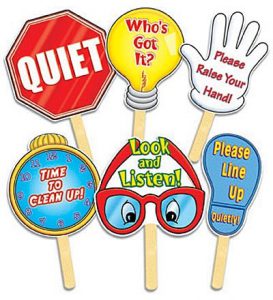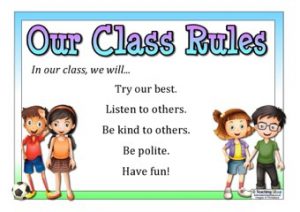Classroom Management
Harry K. Wong has very well said that, “In an effective classroom students should not only know what they are doing, they should also know why and how”.

Classroom management, as the name suggests, is the process by which teachers and schools create and maintain appropriate behavior of students in classroom settings. The purpose of implementing classroom management strategies is to enhance pro-social behavior and increase student engagement with the teachers, school and the friends.
Effective classroom management:
- Establishes and sustains an orderly environment in the classroom.
- Increases meaningful academic learning and facilitates social and emotional growth.
- Decreases negative behaviors and increases time spent academically engaged.
Effective classroom management requires awareness, patience, good timing, boundaries, and instinct. There’s nothing easy about shepherding a large group of easily distractible young people with different skills and temperaments along a meaningful learning journey.
5 Principles of Outstanding Classroom Management are:
1. We take care of ourselves to take care of our students
As the airline safety videos say: Put on your own oxygen mask first. To learn effectively, our students need us to be healthy. So get enough sleep, eat healthy food, and take steps to attend to your own well-being.

- We focus on building relationships
Building healthy student-teacher relationships is essential to a thriving classroom culture, and even sets the stage for academic success. Students and teachers when create a healthy relationship, start having the feeling of belongingness to each other and this feeling of belongingness creates a lot of difference to work together for the success of the child.

- Set rules, boundaries and expectations
Students don’t thrive amid chaos. They need some basic structure—and consistency—to feel safe and to focus. But maintaining a culture of mutual respect doesn’t mean our goal is to “make pals”. We can be kind, loving, and supportive, but we still have to be their teacher. Establishing the code of conduct early in the year, and be sure that everyone—including the teacher—makes an effort to stay true to it.

- Taking a Strength-Based Approach
In a long back-and-forth about classroom management practices, it might have been the most memorable quote: “Find ways to make your hardest kid your favorite kid”. That’s not easy, of course, a strength-based lens means never forgetting to look beneath the surface of behavior, even when it’s inconvenient. We need to find the root of the problem at first.

- Involve Parents and Guardians
“Never forget that every student is someone’s child,” writes Molly Francis. “Parents/guardians/caregivers want to hear that we see the good in their child. A positive connection with home can often help in the classroom. So, it becomes our duty to involve the parents or the guardians in order to make our students help us create an effective classroom management.

By:
Poorva Joshi
